Abstract
Three typical pedigrees with hereditary glaucoma are presented, in which dominant goniodysgenesis is shown to be the actual genetic trait. Because of a marked variation in the expressivity of dysgenesis, the symptoms of the genetic malformation (elevated intraocular pressure and subsequent glaucoma) may appear early or late in life. Therefore, there is no justification in letting the patient's age at the onset of the symptoms decide the classification or the mode of inheritance of the glaucoma (infantile, juvenile, simple), when the common etiologic factor is a dominant dysgenic trait. Consequently, the term "congenital glaucoma" is inadequate and even misleading for glaucoma caused by an inborn malformation, but which may be manifested only after several years or even decades. Instead a new term "dysgenic glaucoma" is suggested as the logical term that also indicates the etiology.
Full text
PDF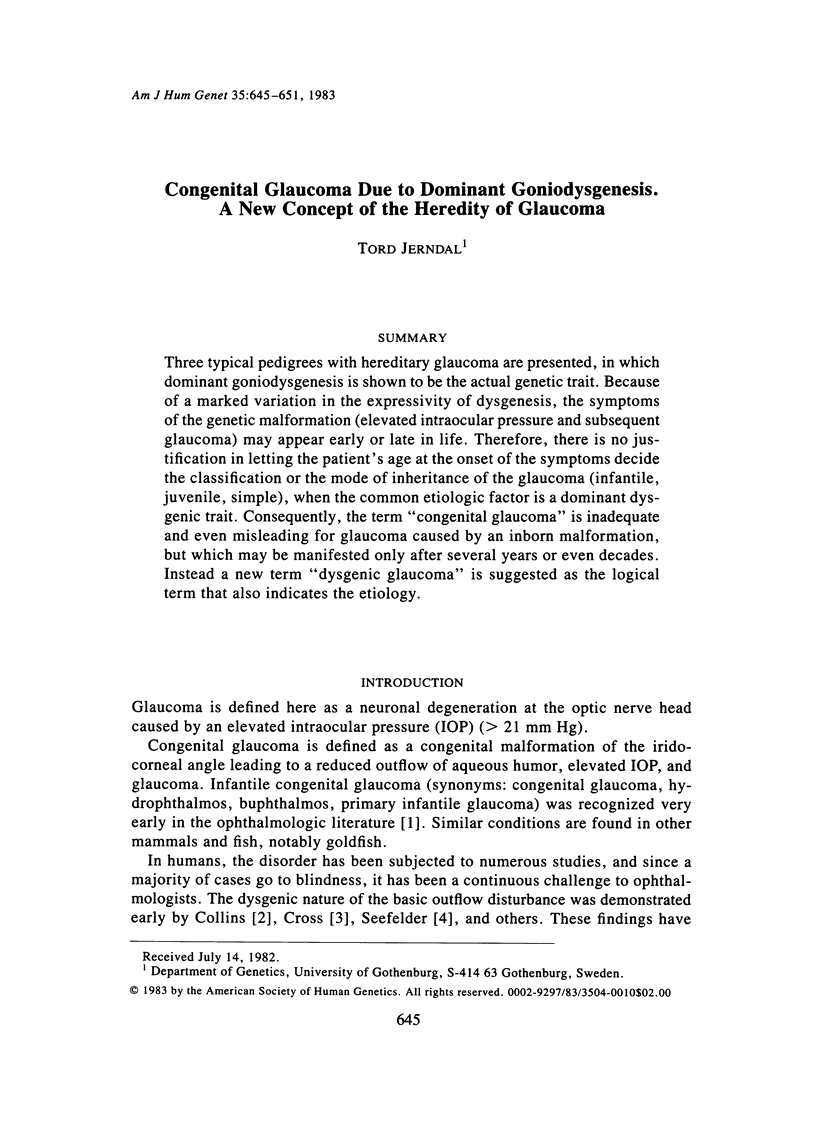
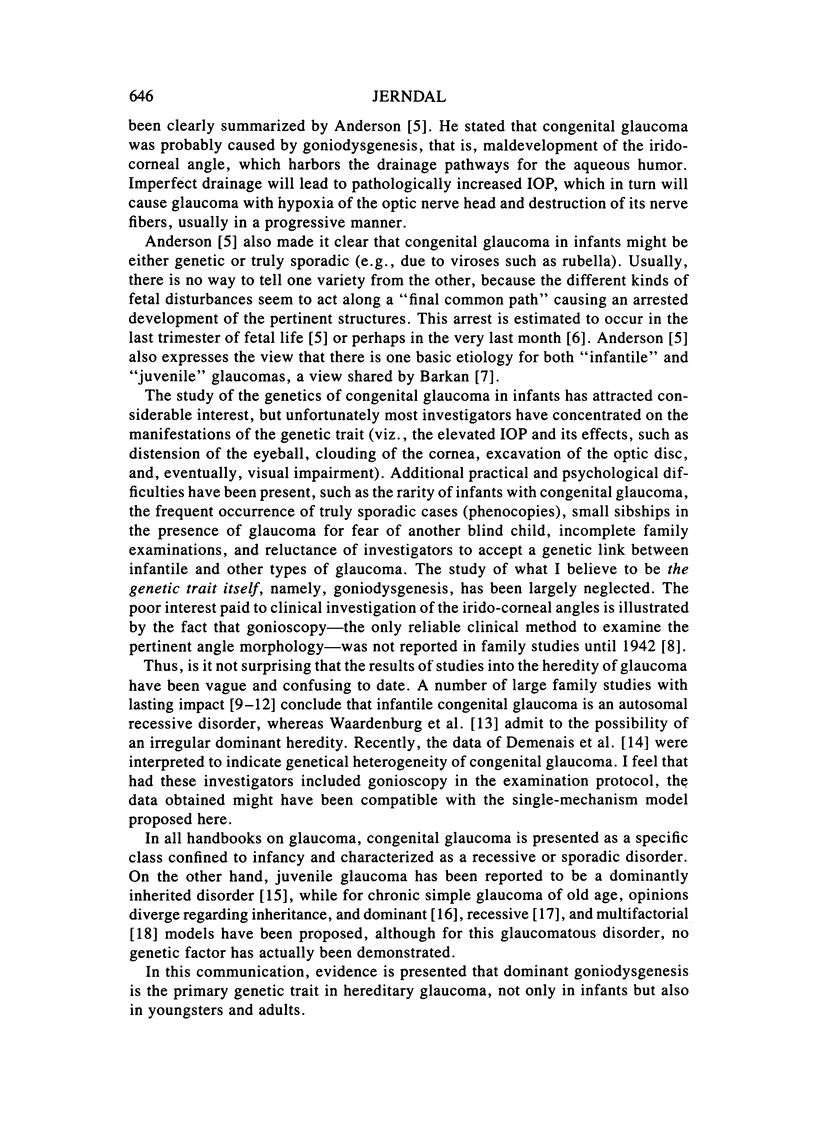
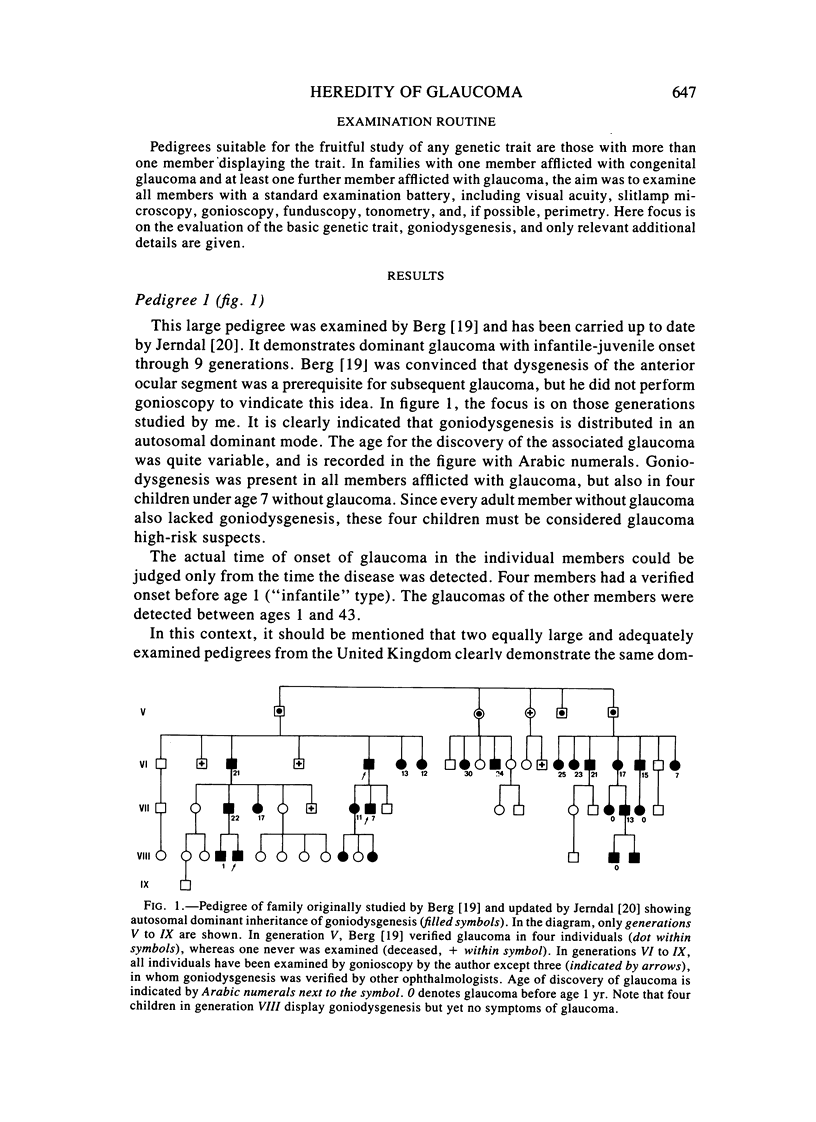
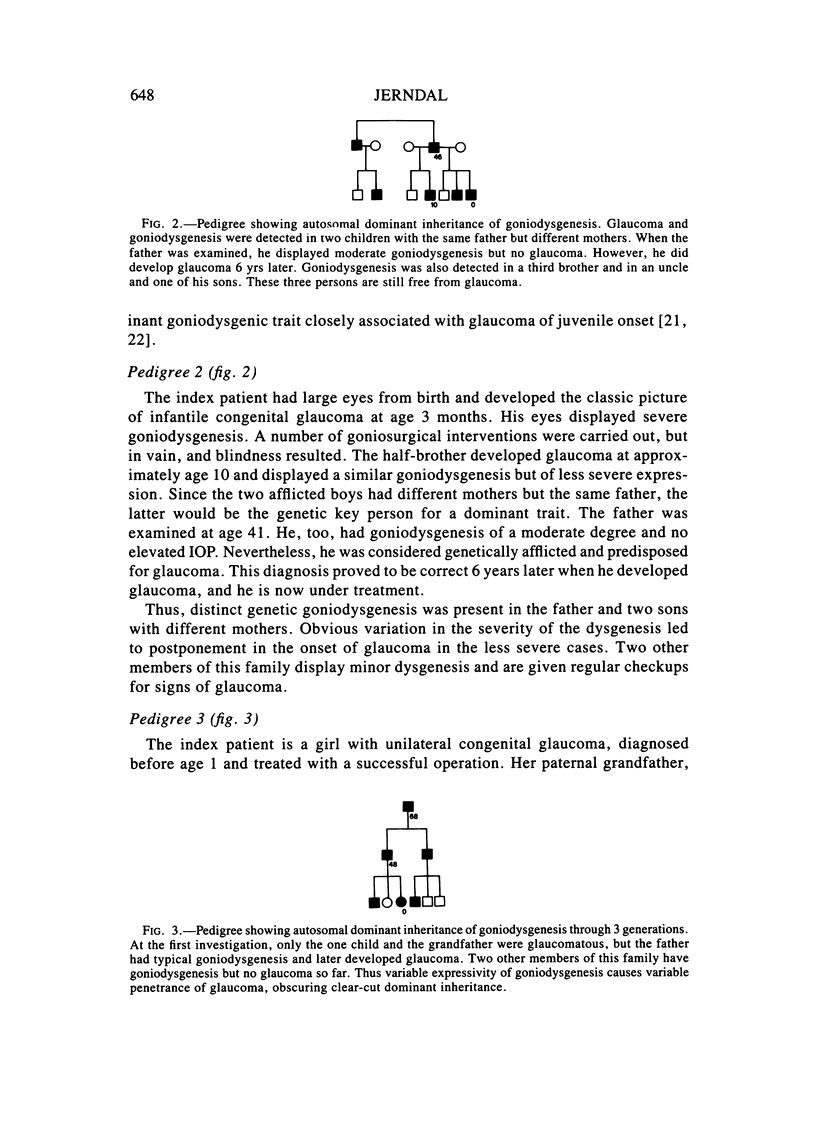
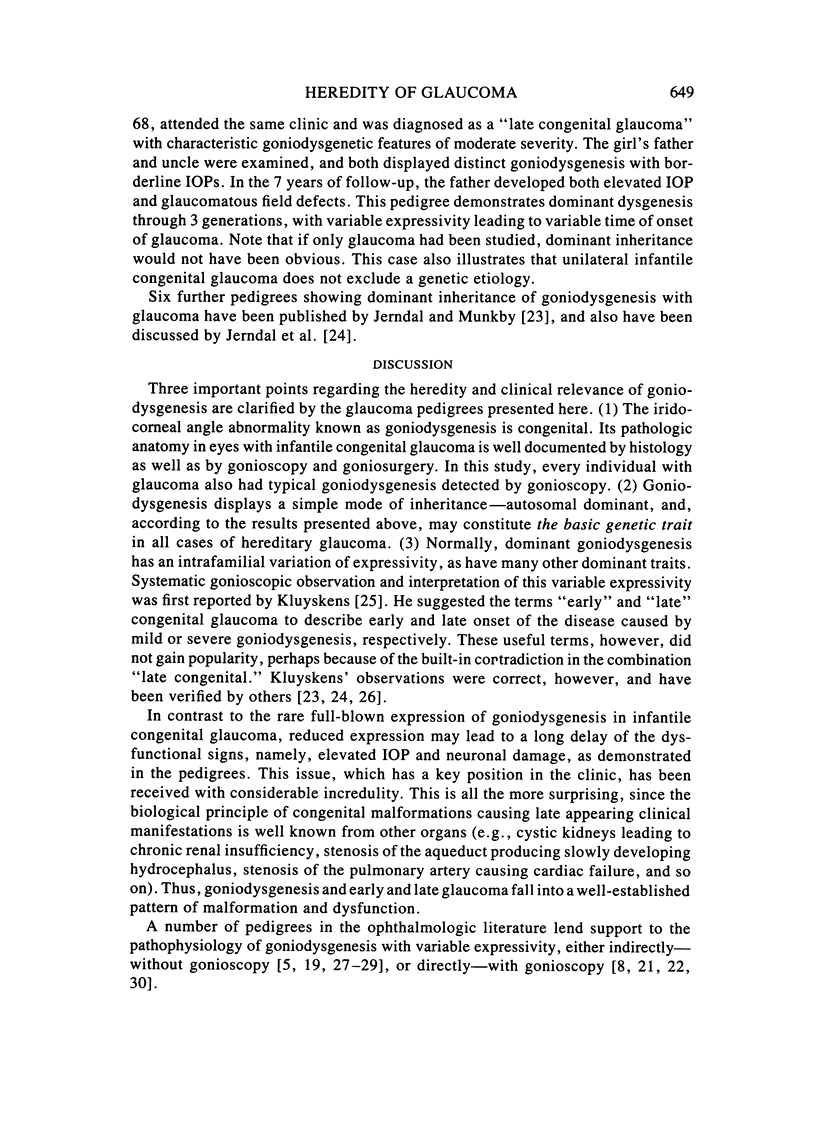
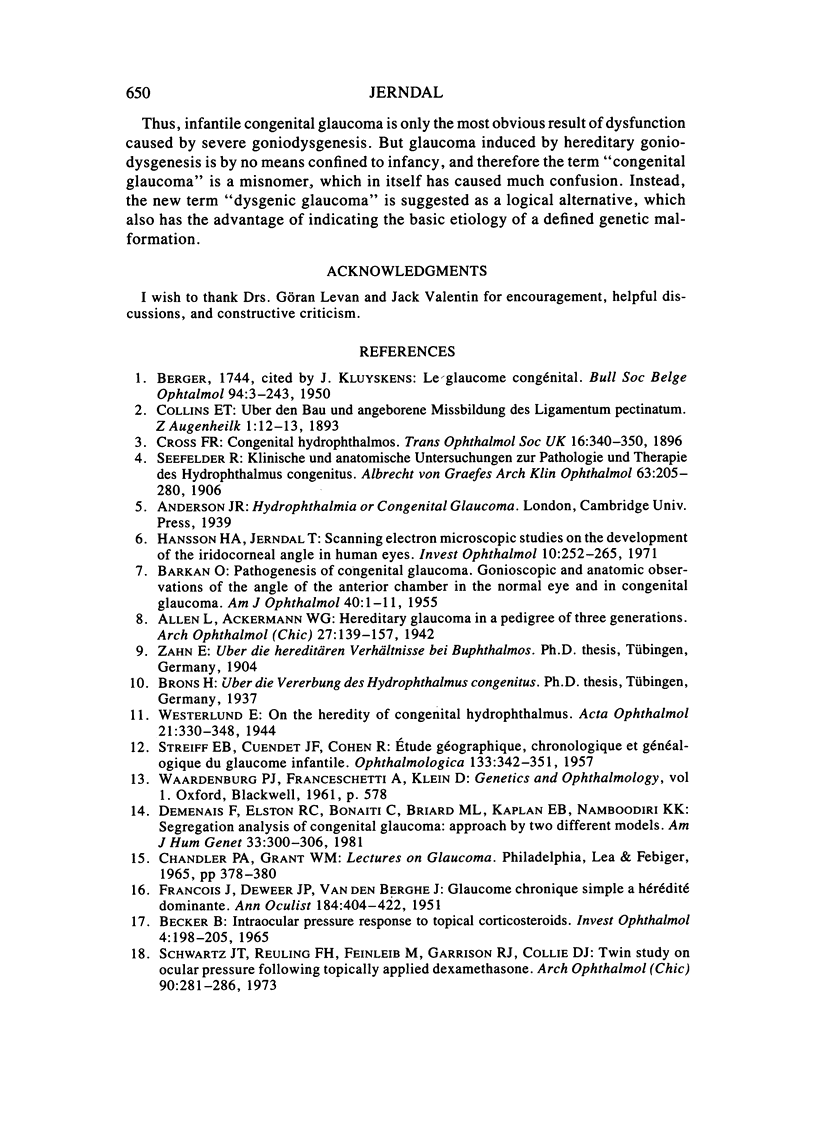
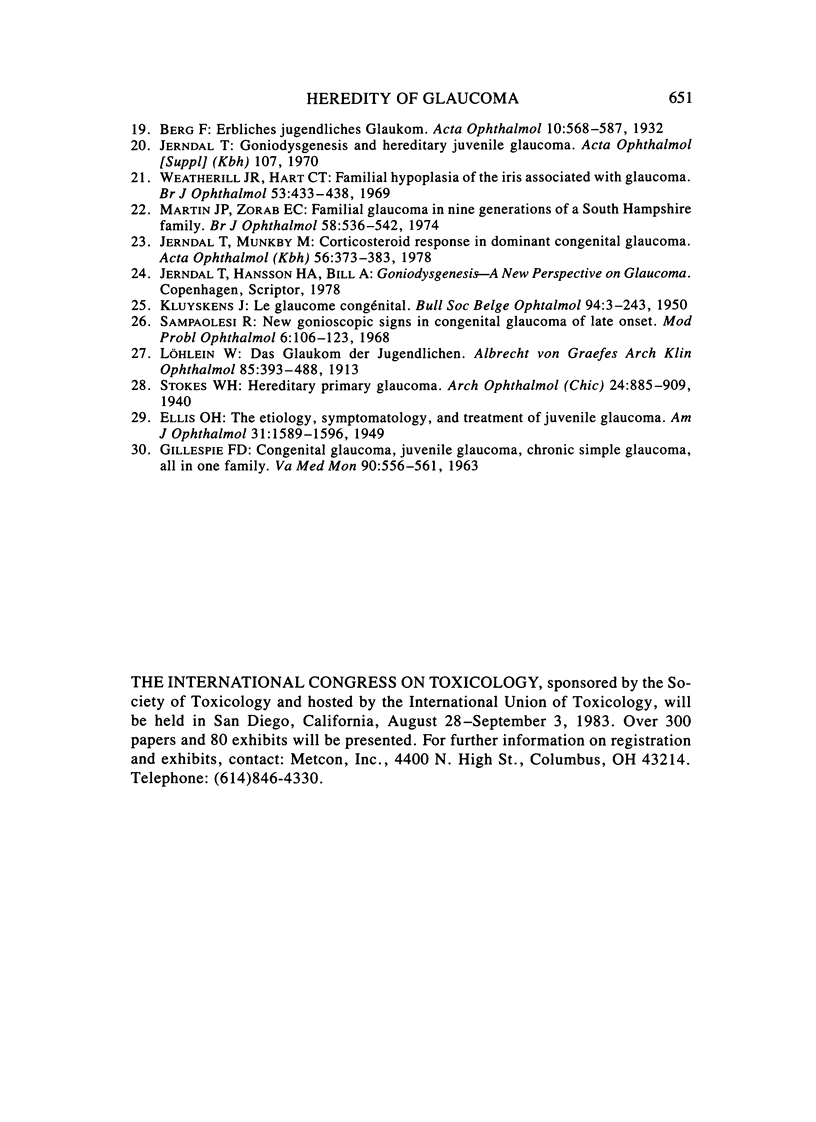
Selected References
These references are in PubMed. This may not be the complete list of references from this article.
- BARKAN O. Pathogenesis of congenital glaucoma: gonioscopic and anatomic observation of the angle of the anterior chamber in the normal eye and in congenital glaucoma. Am J Ophthalmol. 1955 Jul;40(1):1–11. [PubMed] [Google Scholar]
- BECKER B. INTRAOCULAR PRESSURE RESPONSE TO TOPICAL CORTICOSTEROIDS. Invest Ophthalmol. 1965 Apr;4:198–205. [PubMed] [Google Scholar]
- Demenais F., Elston R. C., Bonaiti C., Briard M. L., Kaplan E. B., Namboodiri K. K. Segregation analysis of congenital glaucoma: approach by two differential models. Am J Hum Genet. 1981 Mar;33(2):300–306. [PMC free article] [PubMed] [Google Scholar]
- FRANCOIS J., DEWEER J. P., VAN DEN BERGHE J. Glaucome chronique simple a hérédité dominante. Ann Ocul (Paris) 1951 May;184(5):404–422. [PubMed] [Google Scholar]
- GILLESPIE F. D. CONGENITAL GLAUCOMA, JUVENILE GLAUCOMA, CHRONIC SIMPLE GLAUCOMA ALL IN ONE FAMILY. Va Med Mon (1918) 1963 Nov;90:556–561. [PubMed] [Google Scholar]
- Hansson H. A., Jerndal T. Scanning electron microscopic studies on the development of the iridocorneal angle in human eyes. Invest Ophthalmol. 1971 Apr;10(4):252–265. [PubMed] [Google Scholar]
- Jerndal T., Munkby M. Corticosteroid response in dominant congenital glaucoma. Acta Ophthalmol (Copenh) 1978 Jun;56(3):373–383. doi: 10.1111/j.1755-3768.1978.tb05690.x. [DOI] [PubMed] [Google Scholar]
- Martin J. P., Zorab E. C. Familial glaucoma. In nine generations of a South Hampshire family. Br J Ophthalmol. 1974 May;58(5):536–542. doi: 10.1136/bjo.58.5.536. [DOI] [PMC free article] [PubMed] [Google Scholar]
- STREIFF E. B., CUENDET J. F., COHEN R. Etude géographique, chronologique et généalogique du glaucome infantile. Ophthalmologica. 1957 Apr-May;133(4-5):342–345. doi: 10.1159/000303123. [DOI] [PubMed] [Google Scholar]
- Sampaolesi R. New gonioscopic signs in congenital glaucoma of late onset. Bibl Ophthalmol. 1968;74:106–123. [PubMed] [Google Scholar]
- Schwartz J. T., Reuling F. H., Feinleib M., Garrison R. J., Collie D. J. Twin study on ocular pressure following topically applied dexamethasone. II. Inheritance of variation in pressure response. Arch Ophthalmol. 1973 Oct;90(4):281–286. doi: 10.1001/archopht.1973.01000050283006. [DOI] [PubMed] [Google Scholar]
- Weatherill J. R., Hart C. T. Familial hypoplasia of the iris stroma associated with glaucoma. Br J Ophthalmol. 1969 Jul;53(7):433–438. doi: 10.1136/bjo.53.7.433. [DOI] [PMC free article] [PubMed] [Google Scholar]


